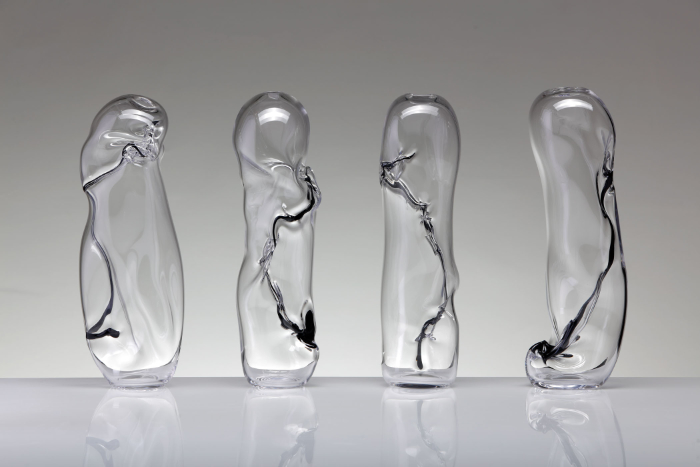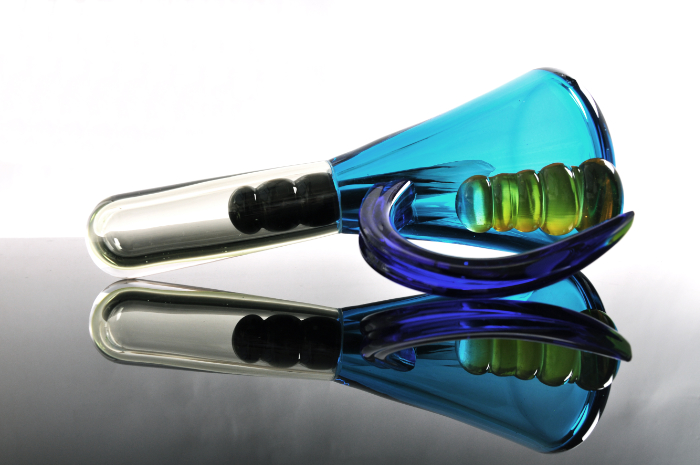
Experimenting with the possibilities
Vicky Higginson likes to conduct extensive research before embarking on her contemporary glass work. Inspired by everything from the Japanese tea ceremony to old laboratory equipment, she reimagines forms in glass to express feelings in potent ways. Linda Banks finds out more.
What led you to start working with glass?
I started working with glass during my undergraduate degree in Manchester. I studied 3D Design and glass was among the materials we covered, although it wasn’t one I had given much thought to beforehand. I always thought I’d be a silversmith. However, in the second year, we tried glassblowing and I was immediately hooked on the process and its possibilities. I certainly wasn’t great at it at the start, but I felt an understanding of the material and I loved working in the hot shop. I went on to specialise in glass in the third year and then did a Masters in Sunderland a few years later.
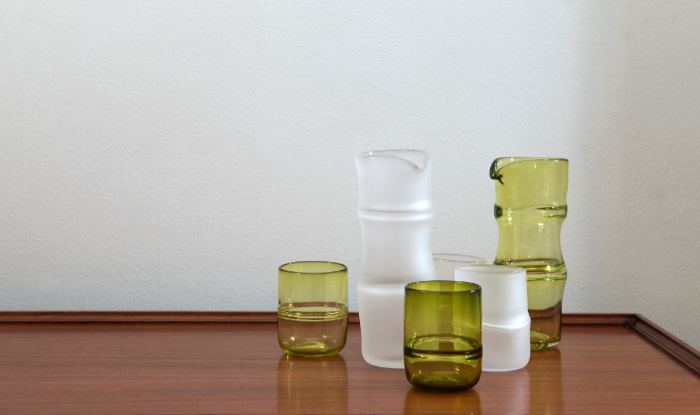
What glass techniques have you used and which do you prefer?
I’ve tried out a lot of different techniques, from blowing and hot sculpting to extensive coldworking and engraving methods. I’ve done some neon bending and would love to do more. I have also tried techniques like mirroring over the last couple of years. As well as learning specific techniques in my university education, I’ve attended courses to learn more about hot and cold assembly of glass. Traditional techniques include incalmo, Swedish overlays, cane and murrini, which I studied with artists including Rob Stern, Nancy Callan and Dick Marquis.
I love blowing glass and working in the hot shop, but I’m a particular fan of combining hot and cold techniques, whether that’s blowing component pieces and then cutting and joining them cold, or coldworking blown pieces with engraving or using diamond wheels on a lathe.

What is your creative approach? Do you draw your ideas out or dive straight in with the materials?
My approach depends on what I’m working on and how much time I have to experiment. When I’ve been lucky enough to have access to facilities, for example as part of a residency, I love to experiment through making and see what happens. I have often come up with ideas for work just through trying out and refining different techniques in the hot shop.
I often back up my work with research, though, such as my investigation into the Japanese tea ceremony, which I reinterpreted for my final Masters project. Recently, I covered a broad range of influences from folklore, mythology and fairytales to historical medical equipment for my Jerwood Art Fund Makers Open commission. I then draw all the ideas together to create my work.
Because I work a lot with composite sculptures, I make a range of component parts and then play around with the composition. I may have an idea of the final form, but I rarely have a plan for the exact pieces that will be required. When I’m coldworking I use a mixture of freehand carving to see how a pattern or texture could turn out and sketch out different ideas in advance.
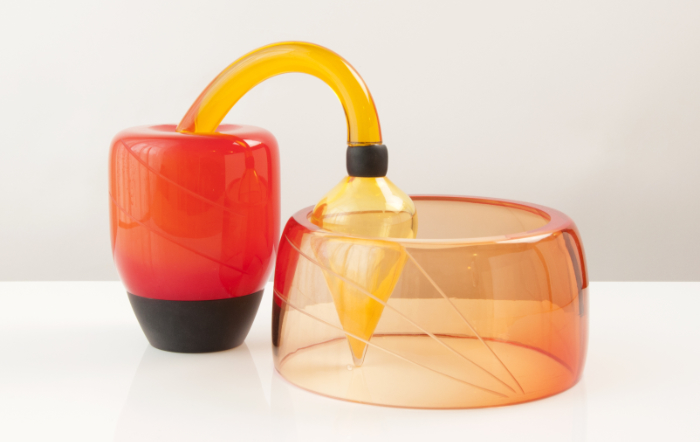
What inspires your work?
I’ve had a lot of different inspirations over the years, but I often come back to Japanese and Scandinavian aesthetics for my design-based work. In my sculptural pieces I use a lot of bold colours and graphic shapes and patterns, inspired in part by the Memphis Movement and designers like Ettore Sottsass.
A lot of my work is concerned with ritual objects and the portrayal of personal narratives. I have researched a lot into culturally significant objects, used in rituals or given special meaning or symbolism. I’m really interested in how objects can tell a story, whether as their primary function, or as relics of past societies and people.
What message(s) do you want to convey through your art?
My latest bodies of sculptural work have been very personal. I started out making sculptures called the Artefacts that looked enticing but unsettling and threatening, which represented thoughts and emotions that are easy to believe but are ultimately harmful.
My recent ‘Coping Mechanisms’ works are in some ways a response to these, imagining objects that incorporate folkloric traditions with medical equipment to create healing devices to cure mental and emotional trauma. These include a reflex hammer to awaken emotional responses, an inhaler to numb grief, a pestle and mortar to break down overwhelming thoughts, mirrored devices to see things from different perspectives, plus a large installation inspired by ear trumpets and stethoscopes to communicate things left unsaid. The works respond to my own experiences of loss, depression and grief, but have connected strongly with the experiences of others. In this work I also wrote excerpts from a fairytale-like narrative, allowing a deeper understanding of the devices. I don’t want to be prescriptive in how people interpret the work and I have been delighted and touched that people have found personal connections with the themes and ideas I have explored.
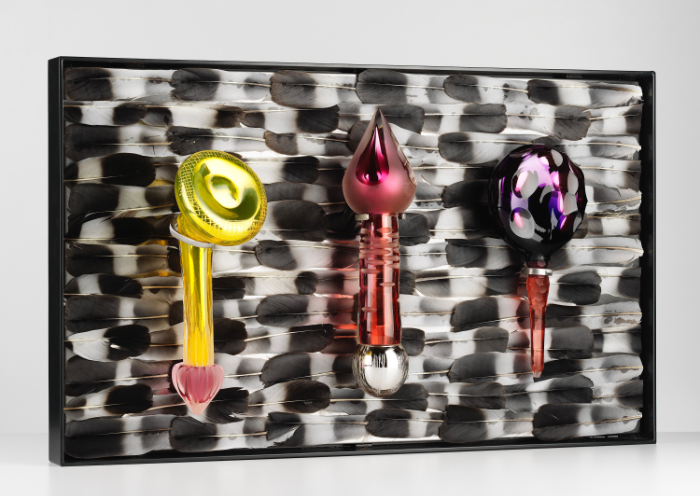
What is your favourite tool or piece of equipment and why?
I bought a lathe a few years ago and it has become my favourite tool. Now I’ve got a range if wheels for it, there’s so much I can do. I use it to carve patterns and textures into the surface, to carve defined shapes in the glass or make deep cuts through colour. Since I have to hire glassblowing facilities, it’s also a way that I can be creative and get hands-on in my studio more regularly. It’s a great tool to transform any bit of glass into something special.
Do you have a favourite piece you have made? Why is it your favourite?
I don’t know if I have one favourite piece, but the one that’s the most personal and successfully achieved what I was aiming for is the piece ‘Coping Mechanism: to numb grief’. It is based on an old anaesthesia inhaler, which has vessels to contain a sponge soaked in ether, connected to a mouthpiece with a rubber tube. My piece reimagines this as a device to recover from grief. The vessel contains a single guinea fowl feather, which I picked up at my brother’s funeral, but it also responds to other losses I have experienced. I am happy with the balance of colour and form, which combines fairly simple shapes to create an arresting object that perfectly frames the feather inside. It means a great deal to me that this piece is now a part of Aberdeen Art Gallery’s permanent collection.
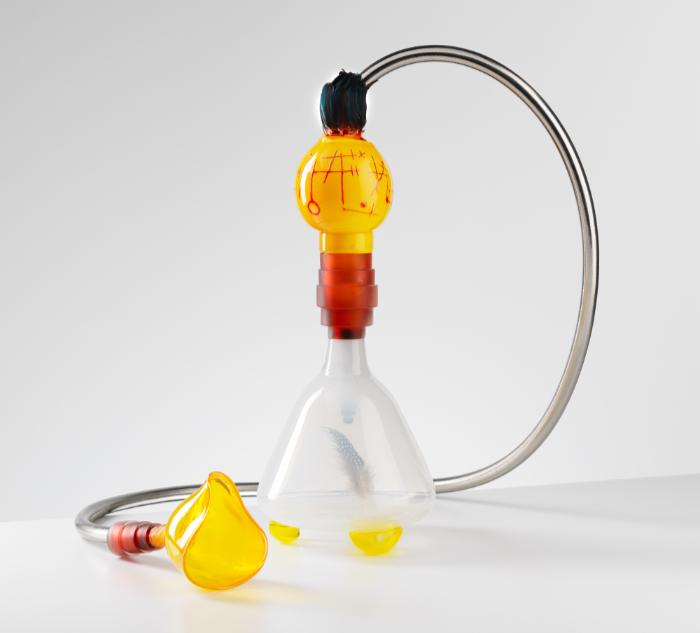
Where do you show and sell your work?
I sell my studio work at craft fairs and through galleries like the Craft Centre and Design Gallery in Leeds and the Biscuit Factory in Newcastle, as well as via some online stockists. I’ve exhibited quite a bit in the UK and overseas in Japan, the Czech Republic, Ireland and the US. Some great exhibitions I’ve been a part of include the British Glass Biennale, Collect and the Jerwood Art Fund Makers Open. I need to get my work into more galleries and I’d love to show more in London.
What advice would you give to someone starting out on a career in glass?
You need to have persistence and resilience to keep going with a career in glass. As with any career in art, it’s not easy and you’ll get a lot of rejections. Some people make it big early on but even in those cases there’s a lot of work involved in the background. Keep applying for things and getting your work out there and seen by people. Even if you don’t get accepted, you’d be surprised how many people will remember having seen your work. I’ve applied over and over for some things and it’s taken years to get some opportunities, like going to Pilchuck Glass School.
Remind yourself why you love working with glass and do work that makes you happy. You won’t please everyone, but, if you love what you do, that will show in your work.
Do you have a career highlight?
The whole experience of my Jerwood Art Fund Makers Open commission has been the highlight of my career. I was surprised to be selected as one of the recipients, having applied a few times previously. I had an uncertain start as COVID-19 meant I couldn’t hire any studios initially. However, that turned out to be a massive benefit to my project, because I really got stuck in to researching and developing the work and building up a whole narrative element around the pieces. The work was exhibited in London, Newlyn and Aberdeen, and I was able to try out new ideas with each installation. I was so well looked after by the Jerwood team. I held an in-conversation event with the curator of Medicine from the Science Museum in London and I was also invited to give a ‘Guest at Grays’ talk in Aberdeen with our fantastic curator. I received some lovely feedback from visitors and was touched when people felt such deep connections with the work; it was the best response I could have asked for and unexpected since it was deeply personal. To top it all, three of the pieces were acquired for Aberdeen Art Gallery’s permanent collection.
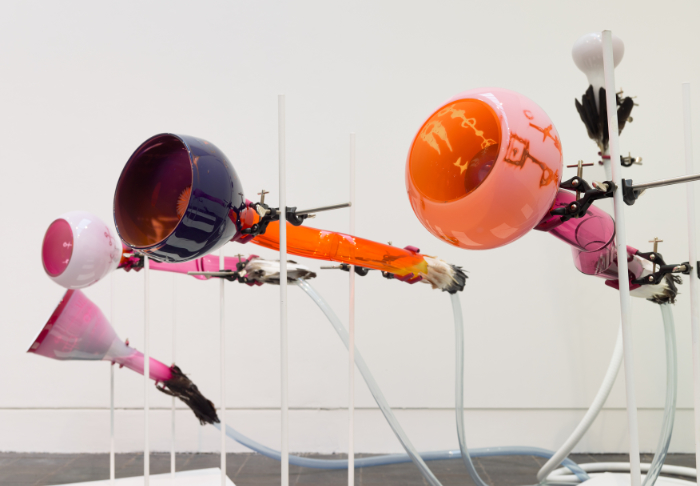
Where is your glass practice heading next?
I always have so many ideas, but, as with everything, it is reliant on funding and opportunities that come up. I plan to continue experimenting with neon bending and incorporating that into my sculptural work. I want to make more conceptual work and am hoping to develop some installations to show at the National Glass Centre next year. I’m also thinking about a PhD, as I really enjoy making work informed by research.
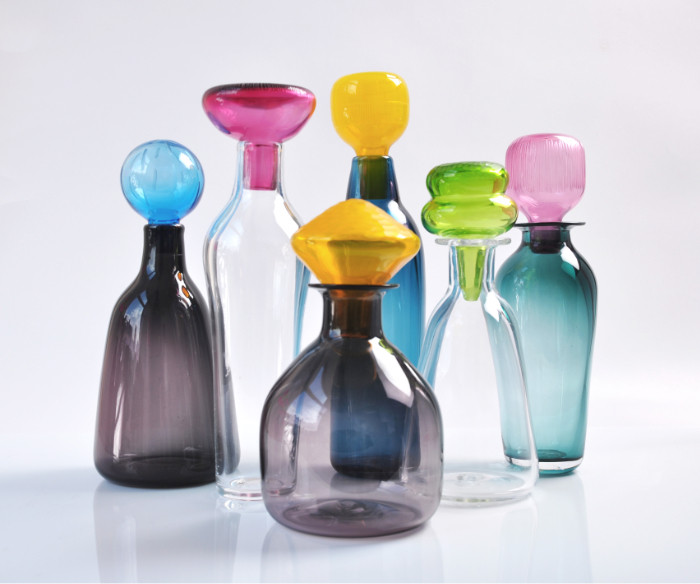
And finally…
I am increasingly worried about the future of the UK glass scene. Energy prices have pushed many artists and studios to their limits and university courses have been under threat or have already closed in the last few years. Now it also seems there are threats to the British Glass Biennale, the National Glass Centre and North Lands Creative, which are all such valuable tentpole institutions in the UK. I really hope there is a way to ensure there is a future for glass in this country and that we stay a part of the global glass community.
About the artist
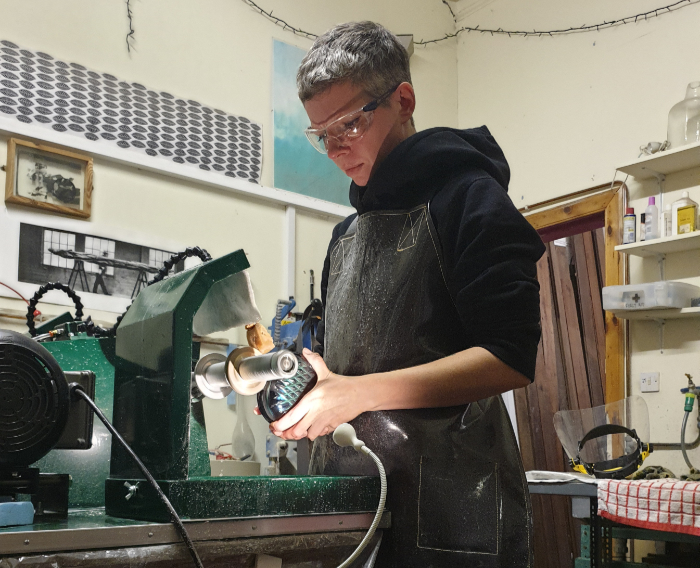
Vicky Higginson is an Edinburgh-based artist working primarily with hand-blown and coldworked glass. She graduated with a MA in Glass from the University of Sunderland in 2011 and has exhibited work nationally and internationally.
Residencies at Edinburgh College of Art and North Lands Creative have been pivotal in the development and evolution of Vicky’s work, allowing her the freedom to experiment and change approach, developing a personal style and themes.
She was awarded the Student Award at the 2012 British Glass Biennale, the Creative Scotland Emerging Artist Bursary in 2015 and she received a scholarship to Corning Museum of Glass in the US in 2018.
In 2022 Vicky worked as a Teaching Assistant at Pilchuck Glass School in the US, and her work was selected for the prestigious New Glass Review.
Find out more via her website.
Vicky will also be one of the five speakers at the next CGS Discovery Day, taking place on Friday 8 September 2023 in Edinburgh. Find out more and book your place via this link.
Main feature image: ‘Artefact V: Aim Low’ by Vicky Higginson. Photo by the artist.
